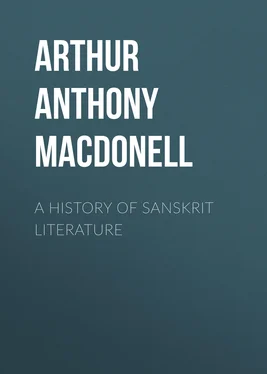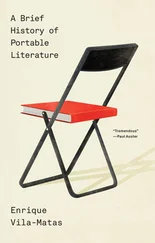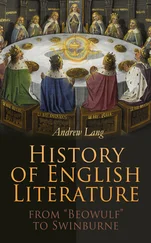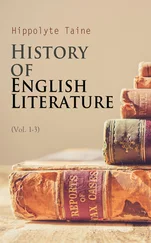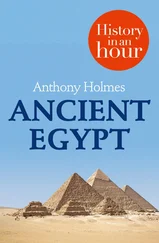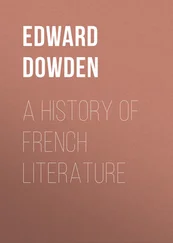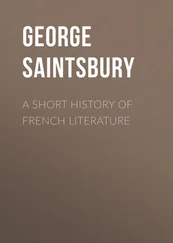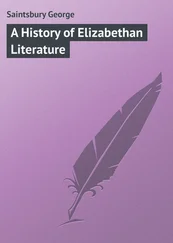Arthur Anthony MacDonell - A History of Sanskrit Literature
Здесь есть возможность читать онлайн «Arthur Anthony MacDonell - A History of Sanskrit Literature» — ознакомительный отрывок электронной книги совершенно бесплатно, а после прочтения отрывка купить полную версию. В некоторых случаях можно слушать аудио, скачать через торрент в формате fb2 и присутствует краткое содержание. Жанр: foreign_prose, foreign_antique, на английском языке. Описание произведения, (предисловие) а так же отзывы посетителей доступны на портале библиотеки ЛибКат.
- Название:A History of Sanskrit Literature
- Автор:
- Жанр:
- Год:неизвестен
- ISBN:нет данных
- Рейтинг книги:5 / 5. Голосов: 1
-
Избранное:Добавить в избранное
- Отзывы:
-
Ваша оценка:
- 100
- 1
- 2
- 3
- 4
- 5
A History of Sanskrit Literature: краткое содержание, описание и аннотация
Предлагаем к чтению аннотацию, описание, краткое содержание или предисловие (зависит от того, что написал сам автор книги «A History of Sanskrit Literature»). Если вы не нашли необходимую информацию о книге — напишите в комментариях, мы постараемся отыскать её.
A History of Sanskrit Literature — читать онлайн ознакомительный отрывок
Ниже представлен текст книги, разбитый по страницам. Система сохранения места последней прочитанной страницы, позволяет с удобством читать онлайн бесплатно книгу «A History of Sanskrit Literature», без необходимости каждый раз заново искать на чём Вы остановились. Поставьте закладку, и сможете в любой момент перейти на страницу, на которой закончили чтение.
Интервал:
Закладка:
For the post-Vedic period we have, in addition to the results of internal evidence, a few landmarks of general chronological importance in the visits of foreigners. The earliest date of this kind is that of the invasion of India by Alexander in 326 B.C. This was followed by the sojourn in India of various Greeks, of whom the most notable was Megasthenes. He resided for some years about 300 B.C. at the court of Pāṭaliputra (the modern Patna), and has left a valuable though fragmentary account of the contemporary state of Indian society. Many centuries later India was visited by three Chinese Buddhist pilgrims, Fa Hian (399 A.D.), Hiouen Thsang (630–645), and I Tsing (671–695). The records of their travels, which have been preserved, and are all now translated into English, shed much light on the social conditions, the religious thought, and the Buddhist antiquities of India in their day. Some general and specific facts about Indian literature also can be gathered from them. Hiouen Thsang especially supplies some important statements about contemporary Sanskrit poets. It is not till his time that we can say of any Sanskrit writer that he was alive in any particular year, excepting only the three Indian astronomers, whose exact dates in the fifth and sixth centuries have been recorded by themselves. It was only the information supplied by the two earlier Chinese writers that made possible the greatest archæological discovery of the present century in India, that of the site of Buddha’s birthplace, Kapila-vastu, identified in December 1896. At the close of our period we have the very valuable account of the country at the time of the Muhammadan conquest by the Arabic author Albērūnī, who wrote his India in 1030 A.D.
It is evident from what has been said, that before 500 A.D. literary chronology, even in the Sanskrit period, is almost entirely relative, priority or posteriority being determined by such criteria as development of style or thought, the mention of earlier authors by name, stray political references as to the Greeks or to some well-known dynasty, and allusions to astronomical facts which cannot have been known before a certain epoch. Recent research, owing to increased specialisation, has made considerable progress towards greater chronological definiteness. More light will doubtless in course of time come from the political history of early India, which is being reconstructed, with great industry and ability, by various distinguished scholars from the evidence of coins, copper-plate grants, and rock or pillar inscriptions. These have been or are being published in the Corpus Inscriptionum Indicarum , the Epigraphia Indica , and various journals devoted to the study of Indian antiquities. The rise in the study of epigraphy during the last twenty years has, indeed, already yielded some direct information of importance about the literary and religious history of India, by fixing the date of some of the later poets as well as by throwing light on religious systems and whole classes of literature. Thus some metrical inscriptions of considerable length have been deciphered, which prove the existence of court poetry in Sanskrit and vernacular dialects from the first century of our era onwards. No direct evidence of this fact had previously been known.
The older inscriptions are also important in connection with Sanskrit literature as illustrating both the early history of Indian writing and the state of the language at the time. The oldest of them are the rock and pillar inscriptions, dating from the middle of the third century B.C., of the great Buddhist king Açoka, who ruled over Northern India from 259 to 222 B.C., and during whose reign was held the third Buddhist council, at which the canon of the Buddhist scriptures was probably fixed. The importance of these inscriptions can hardly be over-rated for the value of the information to be derived from them about the political, religious, and linguistic conditions of the age. Found scattered all over India, from Girnar (Giri-nagara) in Kathiawar to Dhauli in Orissa, from Kapur-di-Giri, north of the Kabul river, to Khalsi, they have been reproduced, deciphered, and translated. One of them, engraved on a pillar erected by Açoka to commemorate the actual birthplace of Buddha, was discovered only at the close of 1896.
These Açoka inscriptions are the earliest records of Indian writing. The question of the origin and age of writing in India, long involved in doubt and controversy, has been greatly cleared up by the recent palæographical researches of Professor Bühler. That great scholar has shown, that of the two kinds of script known in ancient India, the one called Kharoshṭhī employed in the country of Gandhāra (Eastern Afghanistan and Northern Panjāb) from the fourth century B.C. to 200 A.D., was borrowed from the Aramaic type of Semitic writing in use during the fifth century B.C. It was always written from right to left, like its original. The other ancient Indian script, called Brāhmī , is, as Bühler shows, the true national writing of India, because all later Indian alphabets are descended from it, however dissimilar many of them may appear at the present day. It was regularly written from left to right; but that this was not its original direction is indicated by a coin of the fourth century B.C., the inscription on which runs from right to left. Dr. Bühler has shown that this writing is based on the oldest Northern Semitic or Phœnician type, represented on Assyrian weights and on the Moabite stone, which dates from about 890 B.C. He argues, with much probability, that it was introduced about 800 B.C. into India by traders coming by way of Mesopotamia.
References to writing in ancient Indian literature are, it is true, very rare and late; in no case, perhaps, earlier than the fourth century B.C., or not very long before the date of the Açoka inscriptions. Little weight, however, can be attached to the argumentum ex silentio in this instance. For though writing has now been extensively in use for an immense period, the native learning of the modern Indian is still based on oral tradition. The sacred scriptures as well as the sciences can only be acquired from the lips of a teacher, not from a manuscript; and as only memorial knowledge is accounted of value, writing and MSS. are rarely mentioned. Even modern poets do not wish to be read, but cherish the hope that their works may be recited. This immemorial practice, indeed, shows that the beginnings of Indian poetry and science go back to a time when writing was unknown, and a system of oral tradition, such as is referred to in the Rigveda , was developed before writing was introduced. The latter could, therefore, have been in use long before it began to be mentioned. The palæographical evidence of the Açoka inscriptions, in any case, clearly shows that writing was no recent invention in the third century B.C., for most of the letters have several, often very divergent forms, sometimes as many as nine or ten. A considerable length of time was, moreover, needed to elaborate from the twenty-two borrowed Semitic symbols the full Brāhmī alphabet of forty-six letters. This complete alphabet, which was evidently worked out by learned Brahmans on phonetic principles, must have existed by 500 B.C., according to the strong arguments adduced by Professor Bühler. This is the alphabet which is recognised in Pāṇnini’s great Sanskrit grammar of about the fourth century B.C., and has remained unmodified ever since. It not only represents all the sounds of the Sanskrit language, but is arranged on a thoroughly scientific method, the simple vowels (short and long) coming first, then the diphthongs, and lastly the consonants in uniform groups according to the organs of speech with which they are pronounced. Thus the dental consonants appear together as t , th , d , dh , n , and the labials as p , ph , b , bh , m . We Europeans, on the other hand, 2500 years later, and in a scientific age, still employ an alphabet which is not only inadequate to represent all the sounds of our languages, but even preserves the random order in which vowels and consonants are jumbled up as they were in the Greek adaptation of the primitive Semitic arrangement of 3000 years ago.
Читать дальшеИнтервал:
Закладка:
Похожие книги на «A History of Sanskrit Literature»
Представляем Вашему вниманию похожие книги на «A History of Sanskrit Literature» списком для выбора. Мы отобрали схожую по названию и смыслу литературу в надежде предоставить читателям больше вариантов отыскать новые, интересные, ещё непрочитанные произведения.
Обсуждение, отзывы о книге «A History of Sanskrit Literature» и просто собственные мнения читателей. Оставьте ваши комментарии, напишите, что Вы думаете о произведении, его смысле или главных героях. Укажите что конкретно понравилось, а что нет, и почему Вы так считаете.
